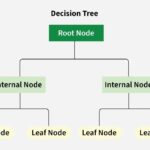 alt
alt
Discovering your true self is a journey of self-discovery. As children, we learn and grow by observing and interacting with the world around us. Positive interactions affirm our value and individuality, fostering a strong sense of self. But what happens when this foundation is shaky? How Do I Learn Who I Am if my upbringing lacked this crucial support?
A healthy environment allows us to develop a secure sense of identity. We understand our thoughts and opinions matter. Conversely, environments marred by abuse, neglect, or overbearing parenting can hinder self-discovery. When feelings and thoughts are dismissed, individuals may struggle to recognize their own needs and desires, leading to the question: “Who am I?” This often results in relying on external validation and struggling with decision-making.
Understanding Your Identity: A Journey of Self-Discovery
Individuals lacking a strong sense of self may lean heavily on others’ opinions. They might adopt trends they don’t genuinely like, engage in activities they don’t enjoy, or let others make decisions for them. This pattern can fuel anxiety and depression, further eroding their self-esteem. Conversely, possessing a strong identity empowers us to make confident choices, build healthy relationships, and live more fulfilling lives.
Practical Steps to Answer “How Do I Learn Who I Am?”
Self-discovery is a process. Here are actionable strategies to connect with your authentic self:
1. Self-Reflection: Uncovering Your Core Values and Preferences
Start by listing things you like: favorite colors, foods, movies, books. Gradually, expand to more complex topics: political views, hobbies, career aspirations. This process unveils your unique preferences and values.
2. Tune In to Your Inner Voice: Recognizing Your Emotional and Physical Responses
Pay attention to your feelings and physical sensations during different activities. Do you feel energized or drained? Happy or anxious? These cues reveal your genuine likes and dislikes, guiding you toward activities that resonate with your true self. Don’t ignore your gut feelings. They often hold valuable insights.
3. Embrace Decision-Making: Exercising Your Autonomy
Actively participate in decisions, big or small. Voice your preferences, whether choosing a restaurant or expressing an opinion on a home renovation project. Each decision strengthens your ability to assert your needs and desires. Start small and gradually build your confidence in making choices.
4. Take Initiative: Engaging in Activities that Spark Your Interest
Plan activities that align with your discovered interests. Invite friends to join or enjoy solo pursuits. Actively engaging in things you love reinforces your sense of self and brings joy and fulfillment. This proactive approach solidifies your understanding of who you are.
Conclusion: Embracing Your Authentic Self
Learning who you are is a continuous process of self-discovery. By practicing self-reflection, paying attention to your inner voice, making your own decisions, and engaging in activities you enjoy, you cultivate a strong sense of self. This journey allows you to live authentically, leading a more meaningful and fulfilling life.
© Copyright 2016 GoodTherapy.org. All rights reserved. Permission to publish granted by Denise Olesky, MA, NCC, LPC, GoodTherapy.org Topic Expert

